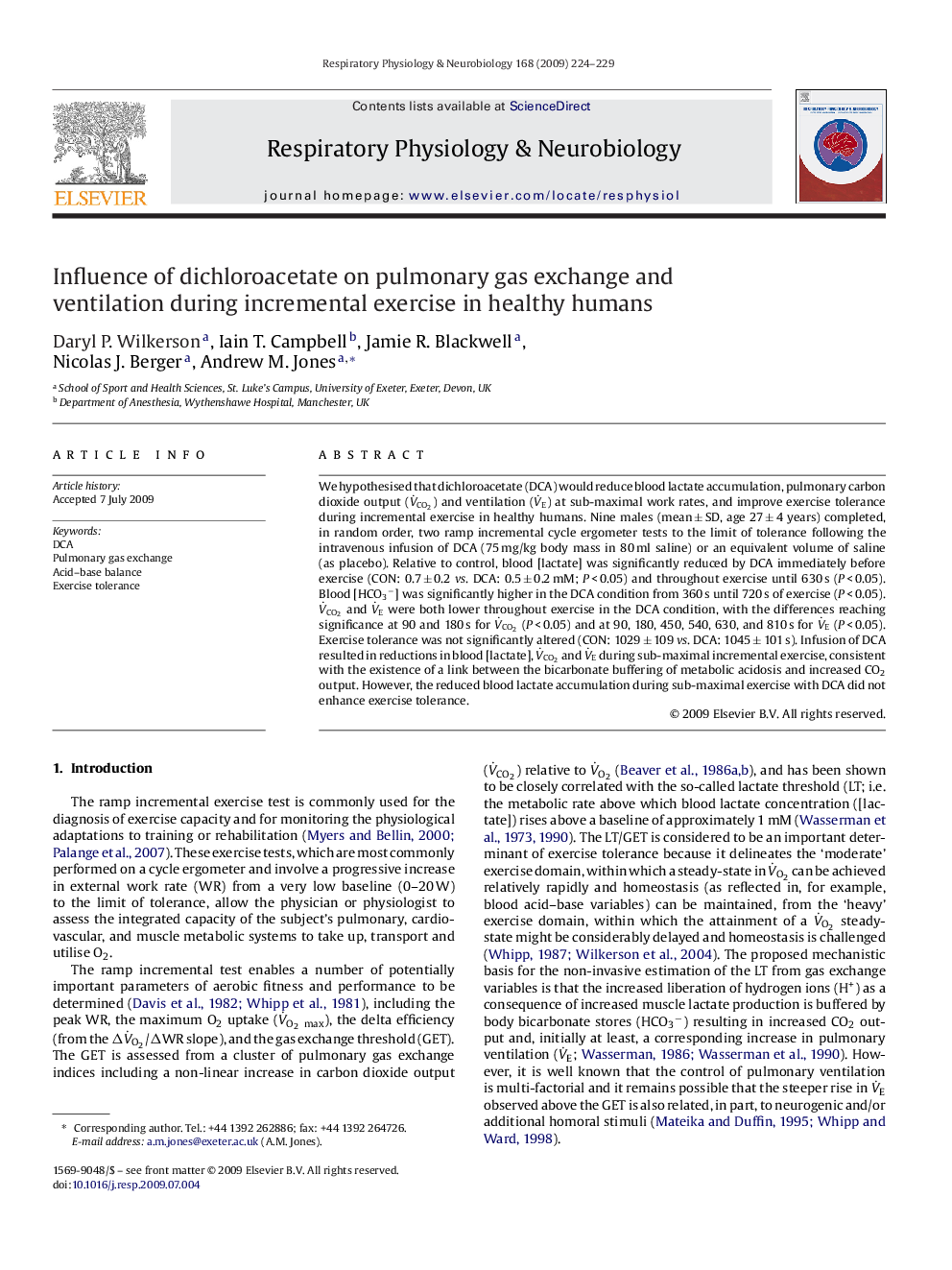| Article ID | Journal | Published Year | Pages | File Type |
|---|---|---|---|---|
| 2847916 | Respiratory Physiology & Neurobiology | 2009 | 6 Pages |
We hypothesised that dichloroacetate (DCA) would reduce blood lactate accumulation, pulmonary carbon dioxide output (V˙CO2) and ventilation (V˙E) at sub-maximal work rates, and improve exercise tolerance during incremental exercise in healthy humans. Nine males (mean ± SD, age 27 ± 4 years) completed, in random order, two ramp incremental cycle ergometer tests to the limit of tolerance following the intravenous infusion of DCA (75 mg/kg body mass in 80 ml saline) or an equivalent volume of saline (as placebo). Relative to control, blood [lactate] was significantly reduced by DCA immediately before exercise (CON: 0.7 ± 0.2 vs. DCA: 0.5 ± 0.2 mM; P < 0.05) and throughout exercise until 630 s (P < 0.05). Blood [HCO3−] was significantly higher in the DCA condition from 360 s until 720 s of exercise (P < 0.05). V˙CO2 and V˙E were both lower throughout exercise in the DCA condition, with the differences reaching significance at 90 and 180 s for V˙CO2 (P < 0.05) and at 90, 180, 450, 540, 630, and 810 s for V˙E (P < 0.05). Exercise tolerance was not significantly altered (CON: 1029 ± 109 vs. DCA: 1045 ± 101 s). Infusion of DCA resulted in reductions in blood [lactate], V˙CO2 and V˙E during sub-maximal incremental exercise, consistent with the existence of a link between the bicarbonate buffering of metabolic acidosis and increased CO2 output. However, the reduced blood lactate accumulation during sub-maximal exercise with DCA did not enhance exercise tolerance.
